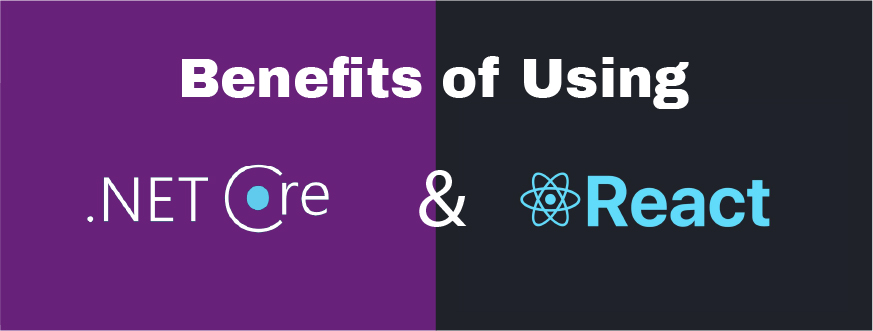
Benefits of Using React with ASP .Net Core
Introduction
For digital product owners focusing on modern application development, React.js and ASP.NET Core stand out as popular technologies. These two powerhouses are often the go-to choices for building scalable, feature-rich solutions. While each has its unique strengths, combining React with ASP.NET Core brings unparalleled flexibility and performance to web applications.
This pairing has become increasingly popular among React ASP.NET Core developers, as it allows them to take advantage of both frameworks’ features, making projects more efficient and robust.
In this blog, we’ll explore why combining React and ASP.NET Core is a smart choice, key benefits, practical use cases, and considerations to guide your development process.
Why Combine React with ASP.NET Core?
Developers frequently pair React with Node.js or Java, but the combination of React with .NET Core has gained traction for its unique capabilities. ASP.NET Core React tutorials often highlight how the integration offers scalability, streamlined hosting, and modern UI capabilities.
While combining React and ASP.NET Core may require handling server code tasks such as loading the index.html file through ASP.NET Core, the benefits far outweigh the challenges. This combination is especially effective when creating React.js + .NET Core applications for modern businesses. If you are interested in exploring such more full stack duos, read out exclusive piece of content to explore most preferred full stack combinations by digital product owners.
Key Benefits of React and ASP.NET Core
Unified Hosting and Streamlined Management
Hosting both React and ASP.NET Core projects within a single ASP.NET Core application eliminates the need for managing separate platforms. This unified approach simplifies deployment and reduces operational overhead.
Seamless API Integration
ASP.NET Core acts as a web API for handling server-side tasks, such as authorization, database access, and business logic, while React focuses on building dynamic and interactive user interfaces. This clear separation ensures modularity and smooth communication between the frontend and backend.
Reduced Development Time
Developers can leverage the power of React.js within an ASP.NET Core app or vice versa, reducing overall development cycles. This is particularly beneficial for delivering projects with tight deadlines.
Enhanced Accessibility
When running in development mode, React with ASP.NET Core automates the startup of the Create React App (CRA) development server. This saves valuable time and improves server accessibility for React ASP.NET Core developers.
Simplified Visual Editing
ASP.NET Core with React.js offers a pre-configured Visual Studio template that simplifies the setup process. This makes it beginner-friendly while reducing the workload for teams new to React and .NET Core integration.
Practical Use Cases
The combination of React and ASP.NET Core excels in projects where:
- Client-side interactivity is essential.
- A Create React App requires a robust backend with API capabilities.
- Unified hosting simplifies deployment and management.
However, for Server-Side Rendering (SSR), alternatives like React with Next.js or tools such as Razzle are better suited, offering features like code splitting and hot module replacement (HMR).
Points to Consider Before Starting
- Ensure you have the latest versions of both React.js and ASP.NET Core installed. Check compatibility with the dotnet –version command.
- Familiarize yourself with development tools like Create React App, Visual Studio Code, and React-Bootstrap.
- For SSR-specific projects, explore solutions beyond ASP.NET Core React templates.
How to Use This Combination (React js + .NET Core) Effectively?
For SSR Alternatives:
If SSR capabilities are a requirement, combining React with ASP.NET Core Web API may not be the best choice. Consider using React with Next.js to deliver faster load times and improved SEO.
Automation Efficiency:
While React with .NET Core automates CRA server startups, frequent backend edits in C# can cause restarts. Optimize the restart workflow for smoother development.
Performance Optimization:
Leverage tools like React-Bootstrap for faster UI development and optimize backend APIs to enhance performance when using ASP.NET Core with React.js templates.
Why Choose C-Metric for React + ASP.NET Core Development?
C-Metric has a proven track record of delivering cutting-edge applications combining React.js with .NET Core. Our expertise ensures seamless integration and high-quality solutions.
Here’s why businesses trust us for their React and ASP.NET Core development needs:
- In-depth Expertise: Skilled in both React.js and ASP.NET Core technologies.
- End-to-End Solutions: Unified development for frontend and backend.
- Custom Development: Tailored solutions to meet unique business needs.
- Timely Delivery: Agile methodologies ensure faster turnaround times.
Let us help you build scalable and modern applications using the powerful combination of React and ASP.NET Core. Contact us to know how our React.js + .Net core full stack developers can help you build a custom solution for your business. Connect with us today to work with best full stack software development company that has explored these two technologies extensively.
